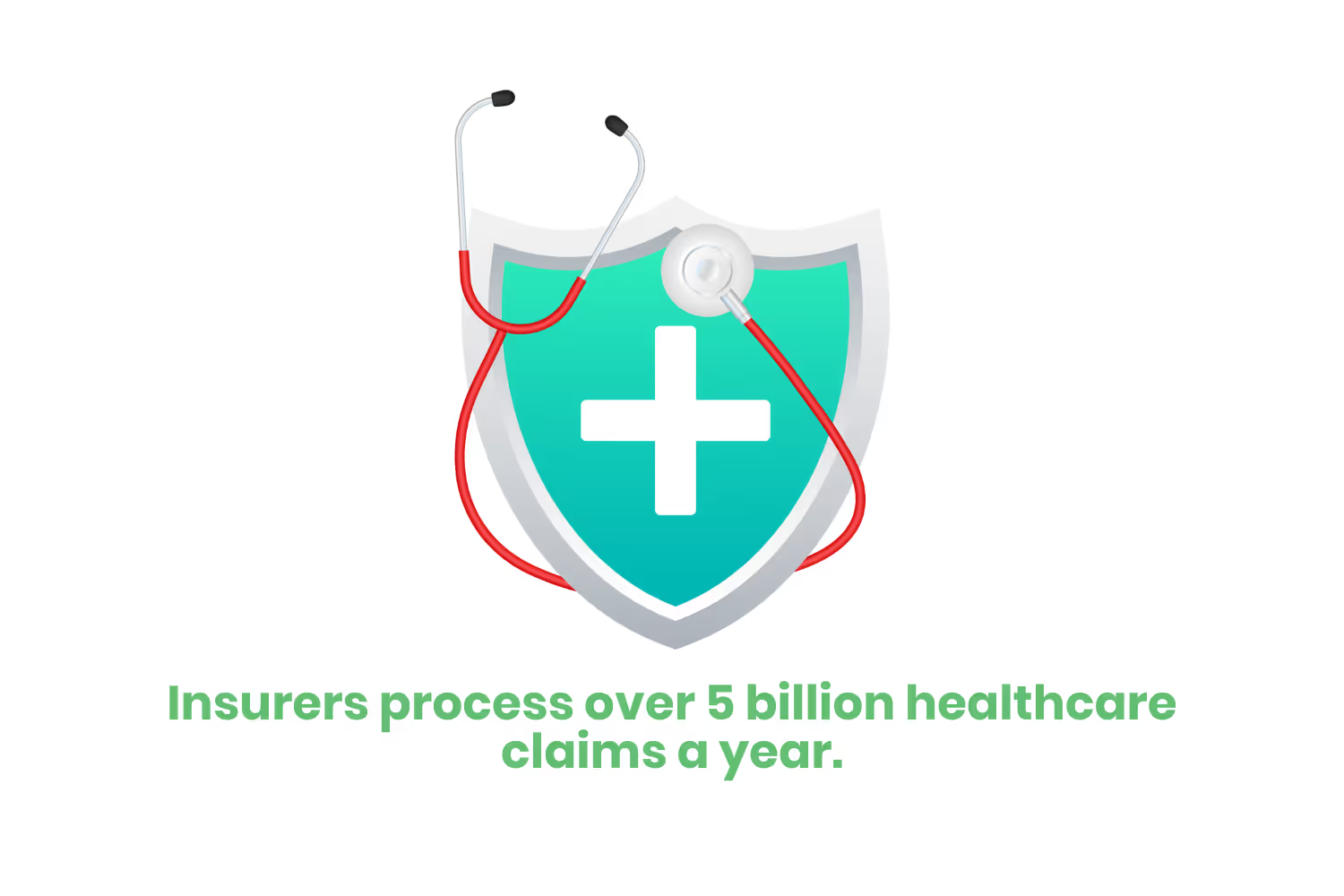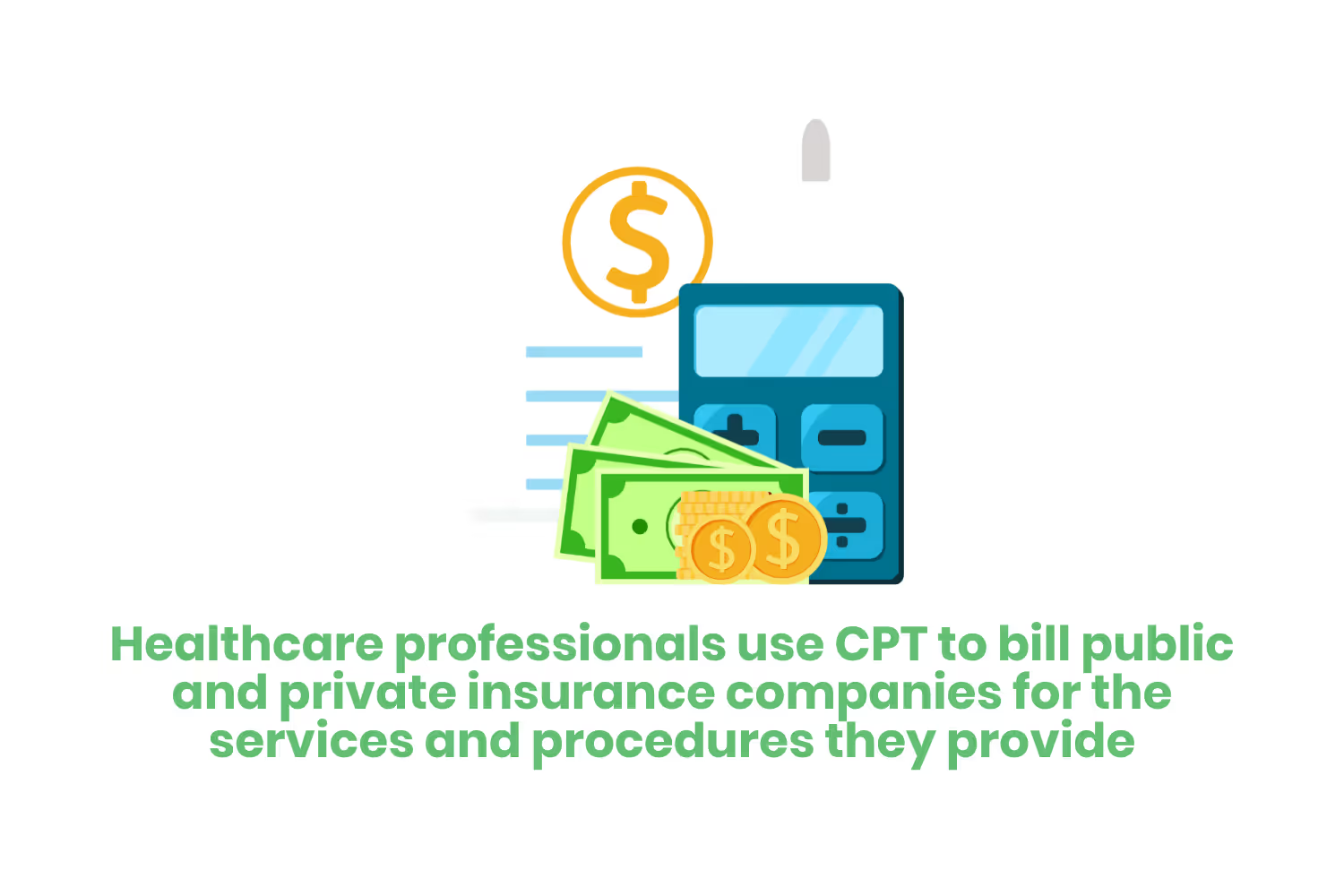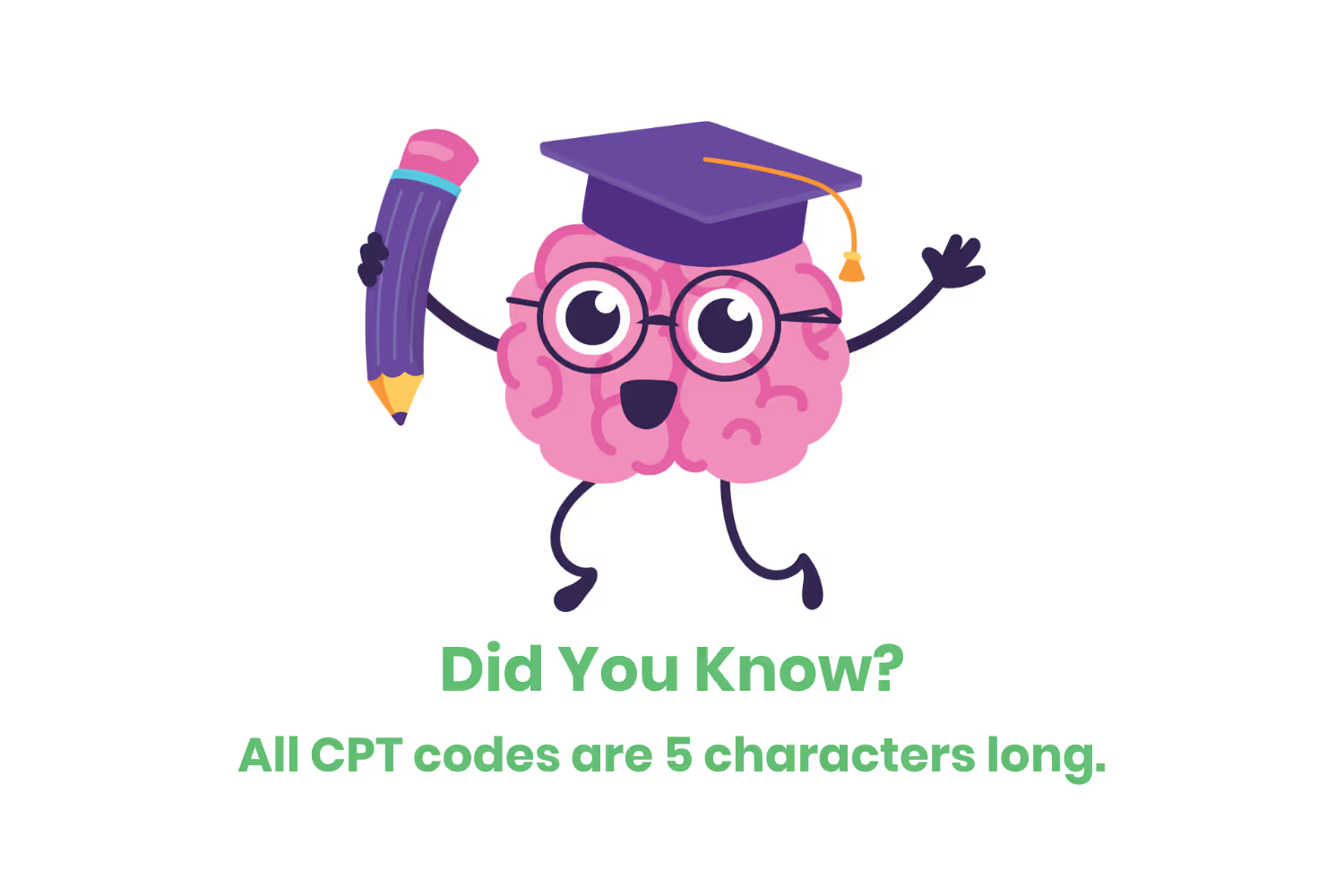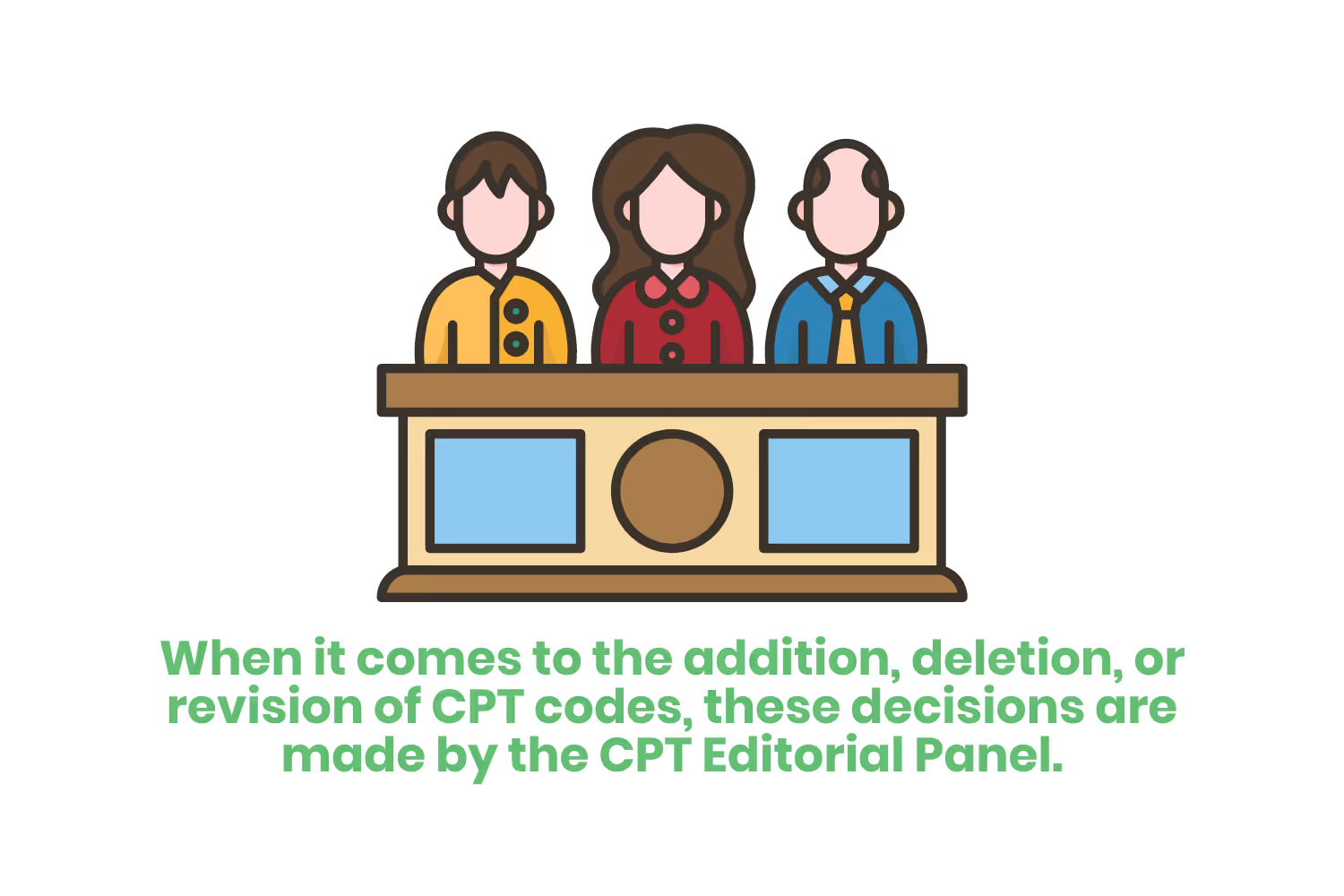[ANSWERED] What is a CPT Code?
In this blog, we will discover what a CPT code is, different kinds of CPT codes, why they exist, and how they help you collect revenue.

In the United States, insurers process over 5 billion healthcare claims annually.
To be able to process these claims, healthcare professionals must provide details on the services and procedures provided. All institutions must understand the information provided, such as private and government payers as well as any other parties involved.

To ensure healthcare data is accurate, thus resulting in faster and more consistent revenue collection, a standardized coding system is essential. Enter the Current Procedural Terminology (CPT) system for Medicare, Medicaid, and other health programs.
In this blog, we will discover what a CPT code is, different kinds of CPT codes, why they exist, and how they help you collect revenue.
What is a CPT Code?
Current Procedural Terminology (CPT) is a fixed coding system that consists of both terms and identifying codes. These CPT codes are universally accepted medical vocabulary. Healthcare professionals use this nomenclature to bill public and private insurance companies for the services and procedures they provide.
Such services may include:
- Surgical.
- Radiology.
- Laboratory.
- Genomic Sequencing.
- Evaluation and Management Services.

If you’re a medical biller, you’re likely very familiar with these codes and how they play an important role in your day-to-day responsibilities. Knowing which codes to use and when can mean the difference between streamlining your revenue cycle and a high claim denial rate.
Making sure to accurately promote communication between patients, medical staff, and payers will also help with:
- Tracking healthcare utilization.
- Developing medical guidelines and other forms of healthcare documentation.
- Conducting research.
- Identifying the correct services for patients.
- Medical care review.
CPT helps increase the accuracy and efficiency of collecting your claims, but where did it start? Let’s take a look at a brief history of the system and how it came to be.
A History of CPT Codes
Once again, this is only a brief history when it comes to the publication of Current Procedural Terminology, but nevertheless still important to know!
In 1966, the first-ever publication of the American Medical Association’s (AMA) Current Procedural Terminology (CPT) edition came to be. It began as a means to code procedures for medical records, insurance claims, and research. It was at this time that CPT codes applied to mainly surgical procedures.
By 1970, the AMA broadened the terms and classification codes that make up the system. CPT then included diagnostic and therapeutic procedures in surgery, general medicine, as well as other specialties. The AMA introduced the five-digit numeric coding system at this time as well.
In 1977, the AMA introduced the fourth edition of CPT. This update introduced a system for the periodic revising of codes. In 1983, CPT became a part of the Centers for Medicare & Medicaid Services (CMS), Healthcare Common Procedure Coding System (HCPCS).
HCPCS codes divide into two principles:
- Level I: Consists of the CPT. This is an alpha-numeric coding system that the AMA maintains. These codes identify medical services and procedures provided by healthcare professionals. These codes don’t include regular billing by medical suppliers other than healthcare providers to report any medical items or services.
- Level II: Standardized coding system used to identify primarily supplies, products, and services not included in CPT codes. This can include drugs, prosthetics, orthotics, as well as supplies used in outpatient settings.
1986 state Medicaid programs require the use of CPT codes. Per the Omnibus Budget Reconciliation Act, in 1987 CMS mandated the use of CPT for documenting outpatient surgical procedures.
Fast forward to the installment of the Health Insurance Portability and Accountability Act (HIPAA) of 1996. The Department of Health and Human Services announces CPT and HCPCS as the national standards for the electronic transfer of healthcare data.
Today we know the CPT coding system as the preferred approach for describing healthcare services and procedures between all insurers and healthcare professionals.
Types of CPT Codes
As you can imagine, there is more than one type of CPT code. They can either be numeric or alphanumeric, depending on the service or procedure provided, but all of them are 5 characters long.
Category I CPT Codes
Medical coders will spend most of their time dealing with Category I CPT codes. These codes describe the medical procedures and services provided by healthcare professionals.
They exist in 6 separate sections, depending on which field of healthcare they pertain to:
- Anesthesiology
- Evaluation and Management
- Surgery
- Radiology
- Pathology and Laboratory
- Medicine
The introduction of new codes is annually released.

Category II CPT Codes
Supplemental tracking codes. Referred to as performance measurement codes, these alphanumeric codes collect data in relation to quality care. The code contains four digits, followed by the character F. These codes are not required, but are helpful for providing further information for future patient management.
Please note that Category II codes never replace Category I or III codes. Category II CPT codes come out three times a year: March, July, and November.
Category III CPT Codes
Temporary tracking codes, in an alphanumeric format, for new technologies within the medical field. This allows for better data collection as well as assessments of any new services or procedures. Oftentimes, these codes collect information to help promote the widespread usage of new and emerging technologies. Ideally, these codes eventually move into the Category I section of CPT.
New Category III CPT codes come out twice a year, in January and July. These codes remain active for five years from the date of publication, if not first accepted for Category I placement. If at the end of 5 years the code is still in Category III, the procedure must move to Category I as an “unspecified procedure” code.
Propietary Laboratory Analysis (PLA) Codes
PLA codes describe proprietary clinical laboratory analyses. These codes can be either:
- Provided by a single laboratory or “sole source”.
- Licensed or Marketed to multiple laboratories approved by the Food and Drug Administration (FDA).
PLA codes include many tests and analyses such as Advanced Diagnostic Laboratory Tests (ADLTs) and Clinical Diagnostic Laboratory Tests (CDLTs).
CPT Code Development
When it comes to the addition, deletion, or revision of CPT codes, these decisions belong to the CPT Editorial Panel. More specifically, the AMA Board of Trustees authorizes the CPT Editorial Panel to do this job.
To successfully submit a new or revised CPT, you’re going to need a few things. First of all, make sure you have a thorough understanding of the process in general. Next, you should know what information you need and make sure when you submit the application, you fill it out completely.
Note that making sure you obtain support from the medical community or provider group that requires the need for the code is an extremely important step in the CPT process. You won’t get far without this support.

Here are the rest of the major information requirements for a new or revised CPT code application:
- Description of procedure or service. Describe the skill and time involved. If it is a surgical procedure, make sure to include an operative report that describes the procedure thoroughly.
- Include a clinical vignette. This should describe the typical patient as well as the work provided by the healthcare professional.
- Diagnoses of the patient for whom the procedure/service is for.
- Copy of any peer-reviewed articles. These published U.S. journals should indicate the safety and effectiveness of the procedure or service.
- How often the procedure is necessary and/or an estimation of its projected performance
- Any copies of additional published literature which supports the request.
- FDA approval of the drug or the device utilized in the procedure or service.
- If revising a CPT code, an explanation as to why the existing code is not adequate.
As the medical field continues to evolve, knowing how to assess whether a new or updated CPT code is necessary is a valuable trait. Any individual provider, hospital, third-party organization, or other interested party is able to submit applications for new or revised codes.
You can find the schedule for submission deadlines as well as any meetings of the CPT Panel on the AMA website.
Conclusion
CPT codes are a critical part of the healthcare revenue cycle. Without this universal system of codes, healthcare facilities have no way of tracking this important data, creating revenue cycle issues that can affect an entire organization.
Correctly logging and billing procedures and services on behalf of a patient can help you ensure quick reimbursements from payers and patients. Any errors may result in incorrectly billed services, miscommunication between departments, and claim denials. Keeping your team up to date and educated on CPT codes will help you avoid missing out on collecting revenue!
Emphasize your product's unique features or benefits to differentiate it from competitors
In nec dictum adipiscing pharetra enim etiam scelerisque dolor purus ipsum egestas cursus vulputate arcu egestas ut eu sed mollis consectetur mattis pharetra curabitur et maecenas in mattis fames consectetur ipsum quis risus mauris aliquam ornare nisl purus at ipsum nulla accumsan consectetur vestibulum suspendisse aliquam condimentum scelerisque lacinia pellentesque vestibulum condimentum turpis ligula pharetra dictum sapien facilisis sapien at sagittis et cursus congue.
- Pharetra curabitur et maecenas in mattis fames consectetur ipsum quis risus.
- Justo urna nisi auctor consequat consectetur dolor lectus blandit.
- Eget egestas volutpat lacinia vestibulum vitae mattis hendrerit.
- Ornare elit odio tellus orci bibendum dictum id sem congue enim amet diam.
Incorporate statistics or specific numbers to highlight the effectiveness or popularity of your offering
Convallis pellentesque ullamcorper sapien sed tristique fermentum proin amet quam tincidunt feugiat vitae neque quisque odio ut pellentesque ac mauris eget lectus. Pretium arcu turpis lacus sapien sit at eu sapien duis magna nunc nibh nam non ut nibh ultrices ultrices elementum egestas enim nisl sed cursus pellentesque sit dignissim enim euismod sit et convallis sed pelis viverra quam at nisl sit pharetra enim nisl nec vestibulum posuere in volutpat sed blandit neque risus.

Use time-sensitive language to encourage immediate action, such as "Limited Time Offer
Feugiat vitae neque quisque odio ut pellentesque ac mauris eget lectus. Pretium arcu turpis lacus sapien sit at eu sapien duis magna nunc nibh nam non ut nibh ultrices ultrices elementum egestas enim nisl sed cursus pellentesque sit dignissim enim euismod sit et convallis sed pelis viverra quam at nisl sit pharetra enim nisl nec vestibulum posuere in volutpat sed blandit neque risus.
- Pharetra curabitur et maecenas in mattis fames consectetur ipsum quis risus.
- Justo urna nisi auctor consequat consectetur dolor lectus blandit.
- Eget egestas volutpat lacinia vestibulum vitae mattis hendrerit.
- Ornare elit odio tellus orci bibendum dictum id sem congue enim amet diam.
Address customer pain points directly by showing how your product solves their problems
Feugiat vitae neque quisque odio ut pellentesque ac mauris eget lectus. Pretium arcu turpis lacus sapien sit at eu sapien duis magna nunc nibh nam non ut nibh ultrices ultrices elementum egestas enim nisl sed cursus pellentesque sit dignissim enim euismod sit et convallis sed pelis viverra quam at nisl sit pharetra enim nisl nec vestibulum posuere in volutpat sed blandit neque risus.
Vel etiam vel amet aenean eget in habitasse nunc duis tellus sem turpis risus aliquam ac volutpat tellus eu faucibus ullamcorper.
Tailor titles to your ideal customer segment using phrases like "Designed for Busy Professionals
Sed pretium id nibh id sit felis vitae volutpat volutpat adipiscing at sodales neque lectus mi phasellus commodo at elit suspendisse ornare faucibus lectus purus viverra in nec aliquet commodo et sed sed nisi tempor mi pellentesque arcu viverra pretium duis enim vulputate dignissim etiam ultrices vitae neque urna proin nibh diam turpis augue lacus.




